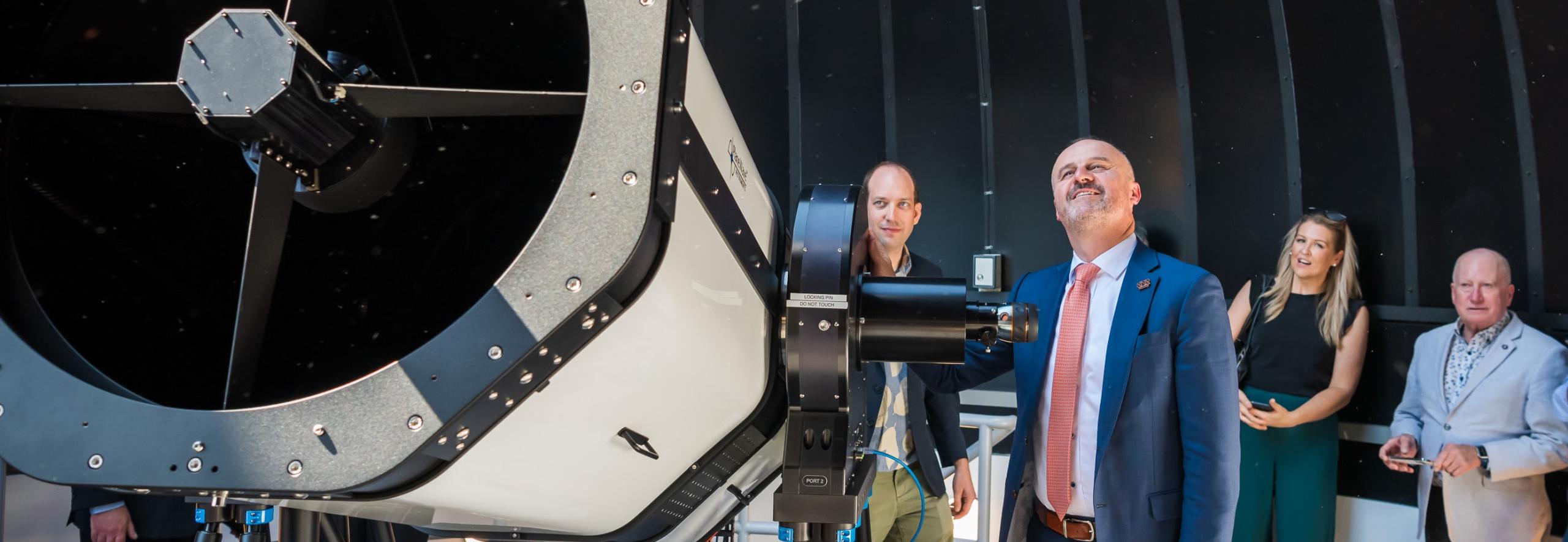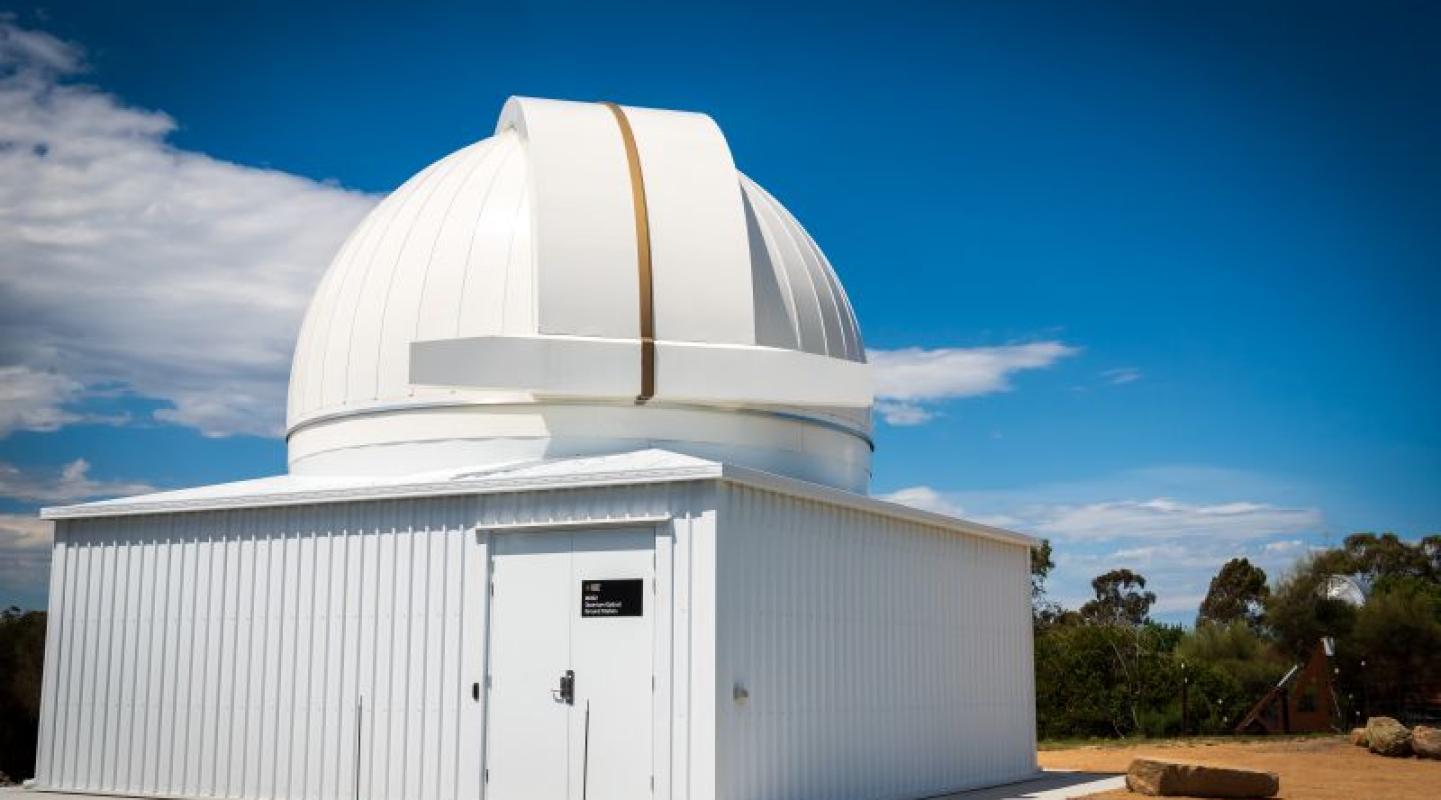
Our society is critically reliant on satellite-to-earth communications for a range of daily activities, from navigation and weather predictions to supporting national security. Current radio frequency systems carry limited data, creating a data downlink bottleneck. Laser communications promises a technology revolution by offering data rates at least 10x faster than existing radio transmission while avoiding spectrum licensing constraints. It’s also compatible with quantum communications for enhanced security. This provides a clear path to meet the growing global demand for space-to-ground communications and support the expanding satellite communications market.
In December 2023, ANU launched the Quantum Optical Ground Station (QOGS), a first for Australia. The QOGS is equipped with advanced instrumentation including adaptive optics and quantum technology to enable high performance and enhanced security. ANU technology enables communication links in challenging environments for a range of mission scenarios from LEO and GEO to lunar and deep space. This will enhance system-wide resilience by augmenting existing telecommunication infrastructure.
With quantum capability built in, this ground station will also provide the underlying infrastructure to connect quantum devices and establish a quantum internet for improved computation, sensing accuracy, and provably secure communications.
The ANU Quantum Optical Ground Station is supported by funding from the ACT Government, with additional support from the Australian Space Agency, CSIRO, TESAT and the ANU Institute for Space.
Mission goals
Create an integrated, quantum-upgraded, laser communications network, providing significantly improved telecommunications capability, security, and resilience across Australia.
ANU team
- Associate Professor Francis Bennet
- Professor Ping Koy Lam
- Associate Professor Matt Sellars
Milestones
- The ANU Quantum Optical Ground Station was launched December 2023.
- The ANU Quantum Optical Ground Station received $1.7 million through the iLAuNCH Trailblazer Hub to develop an advanced optical data receiver instrument for optical and quantum communication and to define the scope of future optical ground station networks.
- An ANU-lead consortium with partners Liquid Instruments, Platypus Instruments and SSC Australia were awarded $4.5 million from the Australian Space Agency’s Moon to Mars program to upgrade the Quantum Optical Ground Station with lunar and deep space communication capability and establish the first Australian deep space communication-capable optical ground station.
- InSpace established a Letter Agreement with NASA to cooperate on developing a low-cost, multi-mission optical ground station.

Breaking news
ANU is partnering with the Defence Science and Technology Group (DSTG)
17-04-2025The Australian National University is thrilled to be partnering with the Defence Science and Technology Group (DSTG)